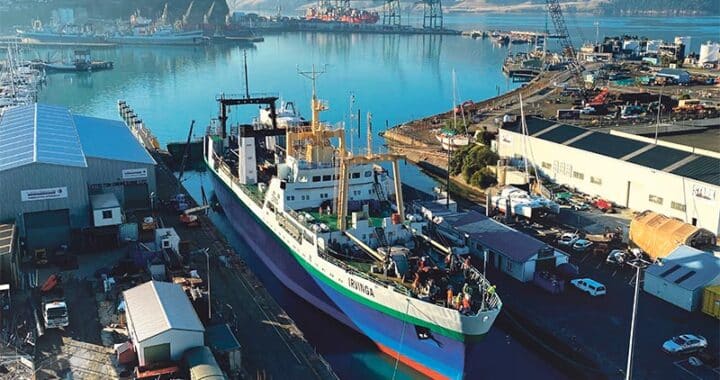Check your gear: help stop the spread of exotic seaweed
3 min read
Caulerpa can be spread through breaking into little pieces and can potentially spread over large distances by rafting on floating debris. Photo: MPI
Boaties and anglers are being urged to clean their anchors and fishing gears to reduce the risk of introducing or spreading exotic seaweeds. This comes after a small clump of suspected Caulerpa brachypus was spotted on a beach in the Bay of Islands.
John Walsh, Biosecurity New Zealand’s director of readiness and response, commended a local resident for taking a photograph of the 20cm seaweed clump found at Te Rāwhiti near Russell. While the seaweed was no longer present when the person returned, provisional identification based on the photograph suggests it was Caulerpa brachypus. A small team is conducting beach-based surveillance to gather more information.
“We know that exotic Caulerpa can be spread through breaking into little pieces and can potentially spread over large distances by rafting on floating debris. This can happen by wave action, or when anchors and fishing gear are moved into or through weed beds, which is why keeping your boat and equipment clean is the best thing you can do to avoid spreading marine pests and diseases, including exotic Caulerpa.
“We have the strictest biofouling requirements for vessels in the world, as shown over the last summer cruise season, to help protect our marine ecosystems, but it’s important everyone plays their part.
“If people think they’ve found this species of Caulerpa, they should not move it elsewhere but let us know. We thank the person who notified us in this instance.”
Biosecurity New Zealand will work closely with the Northland Regional Council and local iwi to determine next steps in Te Rawhiti, including having divers in the water looking for any further signs of Caulerpa brachypus, weather permitting.
Exotic Caulerpa was previously discovered at Aotea Great Barrier Island in July 2011 and later at Ahuahu Great Mercury Island. Removal of this invasive species is challenging, and limited treatment options are available.


Controlled area notices (CAN) and rāhui have been imposed on affected areas to restrict activities that may facilitate its spread.
“At the original finds, we worked closely with Aotea and Ahuahu mana whenua and the local communities, along with Auckland Council, the Waikato Regional Council, and the Department of Conservation to collectively decide a course of action,” said Walsh.
“If we establish through surveying that exotic Caulerpa is in Te Rāwhiti, then a CAN may be an appropriate response, but we will work with the community and seek advice from experts here and overseas.We continue to investigate possible treatment options for Caulerpa and are seeking advice regarding suction techniques and whether they could be viable in our conditions.”
Caulerpa was included in Biosecurity New Zealand’s national marine high-risk site surveillance programme, which surveys locations where there is a high volume of vessel traffic every six months.
Whāngarei Harbour and Ōpua Marina/Waikare inlet in Northland are among the locations covered in the programme.
To report suspected finds of Caulerpa, individuals can contact Biosecurity New Zealand at 0800 809 966 or use the online reporting form at report.mpi.govt.nz.



